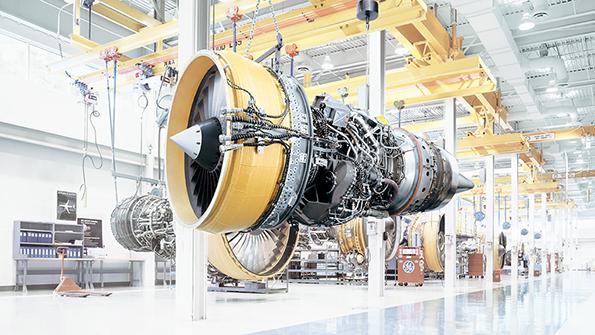
With more than 5,000 engines producing at least a 99% reliability rate, it is hard to argue that GE’s CF34 regional aircraft engine program has been anything but successful.
According to the engine-maker:
- There are 1,643 CF34-10Es in operation with 98 operators. The powerplant has accumulated 32 million flight hours and 23 million cycles, and it generates a 99.98% reliability rate.
- Ninety-eight CF34-10As are in operation with four operators. The powerplant has accumulated 54,000 flight hours and 38,000 cycles, and it has logged 100% reliability.
- The CF34-8 family includes 3,792 engines in operation with 92 operators. The fleet has accumulated 73 million flight hours and 54 million cycles, and it has generated a 99.96% reliability rate.
The CF34-8 variants power Mitsubishi CRJ700, -900 and -1000 regional jets (Bombardier concluded selling its CRJ program to Mitsubishi Heavy Industries on June 1), Bombardier Challenger 870 and 890 business jets and Embraer 170 and 175 regional jets. Meanwhile, the CF34-10 variants power the Comac ARJ21 family and Embraer 190, 195 and 1000 regional jets.
Of the Western air transport variants, Aviation Week Network’s Fleet Discovery database shows 65% of them in service, with only 11% in storage (see chart).
Like all aircraft and engines around the world, the CF34’s flight hours were affected by the COVID-19 pandemic. But, “compared to other engine/aircraft combinations, the use of regional jets with CF34 engines within domestic markets has seen a lower impact on utilization,” says Paolo Bellini, a GE marketing manager for regional engines and services. “And we continue to see, week over week, more engines being brought back to service.”
MTU Aero Engines expects its regional operator customers to focus on “on-wing and near-wing repairs” in the short term. For instance, it just completed “an on-wing blisk repair in Valencia, Spain” for its long-term customer Air Norstrum, says Thomas Needham, MTU Maintenance vice president of programs and sales.
“Both the CF34-8 and CF34-10 engines are typically serviced for performance restoration shop visits—to restore exhaust gas temperature margin and replace or repair some hot-section components—and life-limited parts typically need replacing about every 25,000 cycles,” says Bellini.
Because most CF34 shop visits are performed on condition, it requires a balancing act “to achieve maximum value and minimize costs,” which makes the decision often “more of an economical issue than a technical one,” says Needham. Because of this, he points to the importance of engine trend monitoring.
While the CF34-8 and -10 engines have not been riddled with any major airworthiness directives, there have been service bulletins—which is not unusual. “There has been a CF34-10 low-pressure turbine (LPT) repair bringing engines into shops,” says Needham. “But, in general, there have been no significant performance issues.” He does point out, however, that the LPT service bulletin is causing “engines to come back into the shop within a very short interval of their last shop visit.” So while MTU tries to minimize turnaround time, some operators will opt for spare engines instead of extra downtime.
At the beginning of 2020, GE introduced a durability package for new and in-service CF34-8s. “The durability package, which includes upgrades to the fan, high-pressure compressor, combustor and high-pressure turbine, will reduce the unscheduled engine removal rate by up to 70% and increase time on wing by up to 10%. [That] will result in a lower life-cycle cost of maintenance for operators,” says Bellini. The package is available to all CF34-8 engine customers who want the upgrade at their next shop visit.
GE says it has “several hundred” orders for each: the CF34-8E, which powers the E175E1, and the -10A, which powers the ARJ21.
Eight GE and third-party shops, such as MTU, support the CF34. The OEM does not plan to change its support network.




